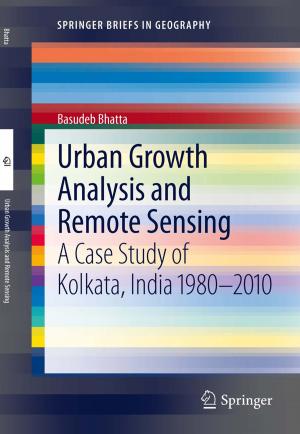Geographical Information Systems in Assessing Natural Hazards
Nonfiction, Science & Nature, Nature, Environment, Natural Disasters, Science, Earth Sciences| Author: | ISBN: | 9789401584043 | |
| Publisher: | Springer Netherlands | Publication: | April 17, 2013 |
| Imprint: | Springer | Language: | English |
| Author: | |
| ISBN: | 9789401584043 |
| Publisher: | Springer Netherlands |
| Publication: | April 17, 2013 |
| Imprint: | Springer |
| Language: | English |
The 16 contributions to Geographical Information Systems in Assessing Natural Hazards report on GIS investigations into landslides, floods, volcanic eruptions, earthquakes and groundwater pollution hazards. Current methods for predicting extreme events are critically discussed, the emphasis being on the intrinsic complexity of this type of operation, requiring many spatial data, long historical records and sound models of the physical processes involved. Within this context, the potentials and limitations of GIS are addressed in terms of data acquisition, spatial data structures and modelling for simulation of the causal phenomena.
Geographic Information Systems in Assessing Natural Hazards will help investigators in both public and private institutions to evaluate the actual effectiveness of GIS in coping with natural disasters, and to develop new strategies for projects aimed at the assessment and mitigation of the effects of such catastrophic events.
The 16 contributions to Geographical Information Systems in Assessing Natural Hazards report on GIS investigations into landslides, floods, volcanic eruptions, earthquakes and groundwater pollution hazards. Current methods for predicting extreme events are critically discussed, the emphasis being on the intrinsic complexity of this type of operation, requiring many spatial data, long historical records and sound models of the physical processes involved. Within this context, the potentials and limitations of GIS are addressed in terms of data acquisition, spatial data structures and modelling for simulation of the causal phenomena.
Geographic Information Systems in Assessing Natural Hazards will help investigators in both public and private institutions to evaluate the actual effectiveness of GIS in coping with natural disasters, and to develop new strategies for projects aimed at the assessment and mitigation of the effects of such catastrophic events.















